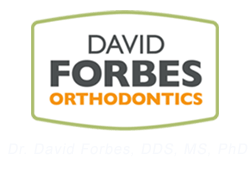The Transition from Baby Teeth to Adult Teeth
The replacement of the baby teeth by the adult teeth occurs in two distinct phases: the first phase of replacement occurs between the ages of 5-7 years of age; the second phase between 11-14 years of age. During the first phase the permanent front teeth erupt in both the upper and lower jaws.
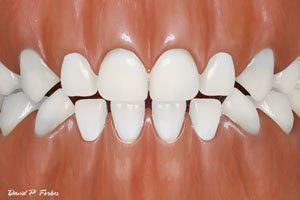
ABOVE: An Illustration of Baby Teeth
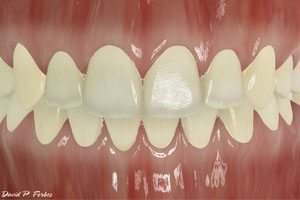
ABOVE: An Illustration of Adult Teeth
- The width of the bite
- The front to back relationships of the bite, and
- Aligning the teeth
During this time period, traditional braces may be used to align the teeth. Rubber bands and the Herbst appliance may be selected to correct the bite relationship. The choice whether to use rubber bands or a Herbst depends on the severity of the bad bite. Rubber bands are used to correct the bite by moving teeth. The Herbst appliance relocates the lower jaw, and in doing so, corrects the bite. Rubber bands only effect the teeth and the Herbst appliance effects the bony arch to assist in bite correction. An added benefit of the Herbst appliance may be an improvement of the middle airway by positioning the tongue anteriorly. This movement of the tongue may enlarge the airway.
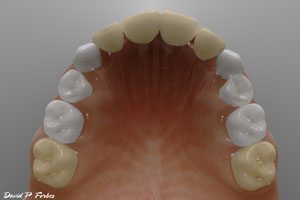
ABOVE: An illustration of the first phase of eruption of the permanent teeth (yellow). The baby teeth are designated by white color. Note that boundaries are set with the first phase of permanent teeth eruption (molars and incisors). The next phase of permanent teeth eruption either fit in this allocated room of the remaining baby teeth or space problems may occur.
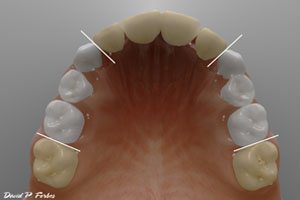
ABOVE: An illustration showing the restriction placed on the second phase of eruption of the adult teeth by the first phase. The white lines indicate the zone that the second phase must fit or crowding will result.
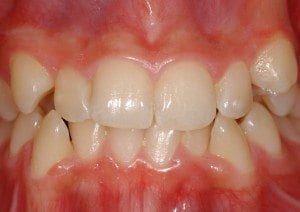
ABOVE: A photograph of a young lady with crowding of the upper and lower teeth showing teeth erupting off the bony ridge of the arch.
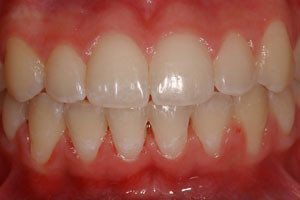
ABOVE: A photograph of same young lady, with completed treatment.
